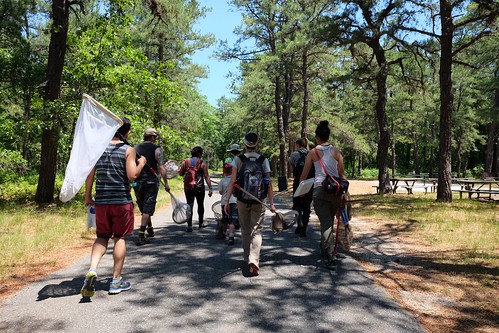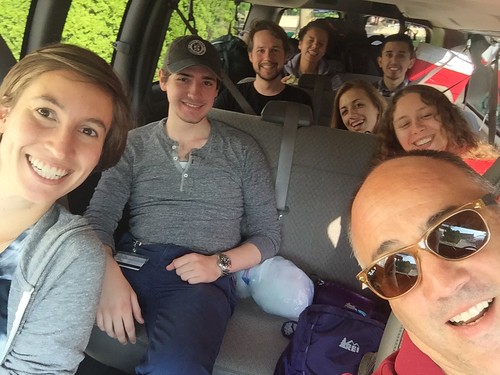As my time at the Frost comes to an end, I would like to share with you my journey, discoveries, and highlights of this amazing summer internship.
I arrived at the Frost a few months ago to warm welcomes and fellow colleagues who shared the same passion for studying insects as I did. I was impressed by the entomological expertise my colleagues demonstrated in their research fields. I admit, this partially intimidated me since my interest in entomology was sparked only recently and I was barely familiar with basic insect ecology obtained from an undergraduate course last semester. However, I did not did let this deter me from reaching out to my peers and familiarizing myself with the different insect orders they studied such as Odonata, Hymenoptera, and of course, Phthiraptera (an ectoparasitic group I worked with very closely this summer!)
My work primarily involved upgrading the Frost’s archaic ectoparasite collection. This included proper replacement of the half-century old, degraded ethanol-preserved containers, assigning each shell vial a unique identifier, and digitizing the contents of over 1,400 vials in a biodiversity informatics data standard known as the Darwin Core Archive.

I also undertook the task of cataloging K.C. Kim’s remarkable louse collection. The collection is described as one of the largest in the world, containing over 15,000 slides representing louse species from EVERY continent – Yes, even Antarctica.



Working with this collection truly taught me to appreciate the ecological value of lice despite their negative reputation as disgusting, blood-sucking critters set by society. For example, I was able scrutinize slides from the year 1870 and compare them to their modern counterparts. In most cases, what I discovered was that if there was an evolutionary change in louse host, the louse often co-evolved, developing traits strikingly similar to those of its host. Since both louse and host posses analogous traits, I believe there is potential to utilize lice as indicators to environmental change – experiencing population fluctuation rates much faster than its host.
Not only was I involved in curatorial projects, but having never left the state of California before, I was fortunate enough to explore the East Coast via several (local and non-local) lab-collecting trips! One of the first sites I visited was Ten Acre Pond, a small, species-rich pond (perfect for Odonate collecting) located about four miles west of State College.

Not to mention I also got to witness some breath-taking sites in New Jersey!


During our excursion to the New Jersey Pine Barrens, we stopped by Philly to tour the Entomology Department at The Academy of Natural Sciences. There, we were able to take a closer look at some their most exquisite and largest collections. Below are a few examples of the displays we saw.

Here is one of my favorite displays demonstrating crypticity at its finest!

All in all, I am extremely grateful for this incredible experience and for my coworkers and supervisors who helped me along my journey and made this summer unforgettable. Whether it was helping me sort and digitize the collection, learning about morphology using high resolution photos via Confocal Laser Scanning Microscopy (CLSM), or even answering my silly entomological questions such as, “Are damselflies members of the Odonata order?” I cannot stress how much I learned this summer! I would also like to shout-out my mentor Andy who made this all possible and taught me there’s so much more to lice than being a common nuisance in children. I honestly never really understood why anyone would study lice or why it’s such an underrated research field. However, after analyzing hundreds of specimens a day they gradually grew on me (not literally) and I began to appreciate their ecological value and realized how crucial they are to science. A combination of hands-on learning and field work ultimately showed me how to fill in the gaps in my learning much quicker than any traditional classroom setting ever has. I am absolutely thrilled to bring all this knowledge back with me to California and UC Berkeley, hopefully applying it to my future studies in Environmental Science.
…One last thing, cheers to a great summer and meeting fantastic people!

Leave a Reply